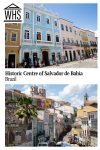Historic Centre of Salvador de Bahia
By Tess Kazenoff
What is the Historic Center of Salvador de Bahia?
Characterized by its cobblestone roads, pastel-toned Portuguese-style buildings, and as a symbol of Afro-Brazilian culture, the Historic Center of Salvador is a fascinating cultural site located in Bahia, a state in the northeast of Brazil.
As the former capital of Brazil while under Portuguese rule from 1549 until 1763, and as the site of one of the first and largest slave markets in the New World, this historic neighborhood, also known as Pelourinho, is full of history and culture.
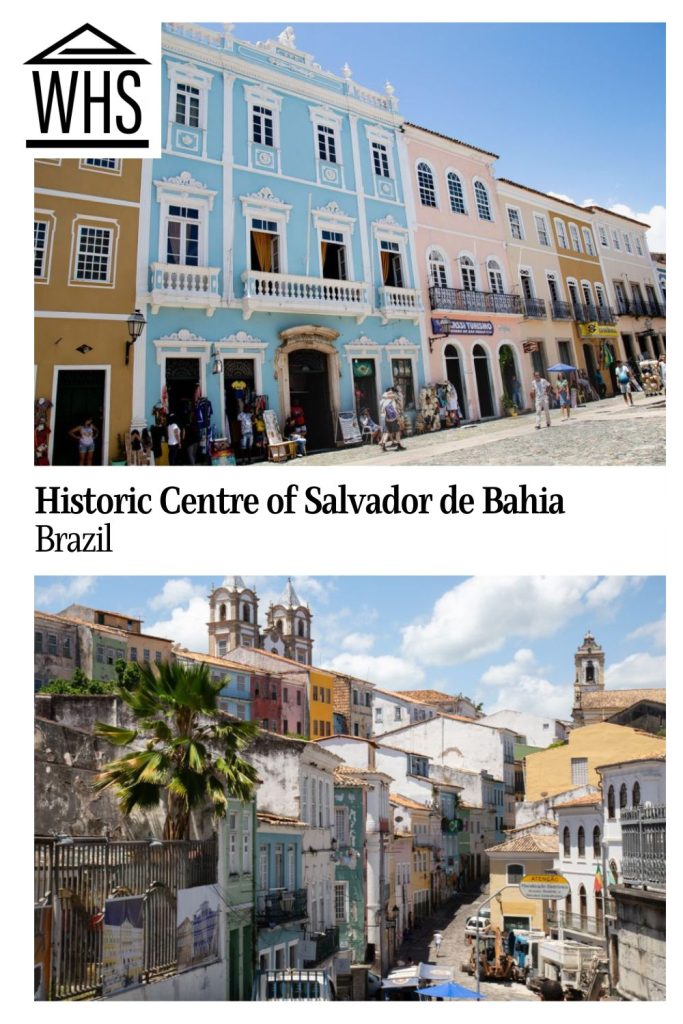
Disclosure: This article contains affiliate links. Making a purchase through an affiliate link will mean a small commission for this website. This will not affect your price. Privacy policy.
Why is the Historic Center of Salvador de Bahia a UNESCO World Heritage site?
Salvador’s historic significance is vast, serving both as a symbol of Portuguese colonization and as a blend of European, African, and Indigenous cultures from the 16th to 18th centuries. According to UNESCO, “Echoes of this multicultural past survive to the present day in the historic centre’s rich tangible and intangible heritage.” UNESCO adds that this theme – a result of world exploration – is also expressed by other members of the UNESCO World Heritage list: Old Havana in Cuba, Angra do Heroismo in the Portuguese Azore islands, San Juan in Puerto Rico, and Cartagena in Colombia.
The historic center’s Renaissance urban structuring and architecture have also helped cement its historic value and status as a UNESCO World Heritage site. Throughout Pelourinho, you can find a number of baroque-style buildings and 16th-century public spaces, as well as countless colorful buildings adorned with stucco details.
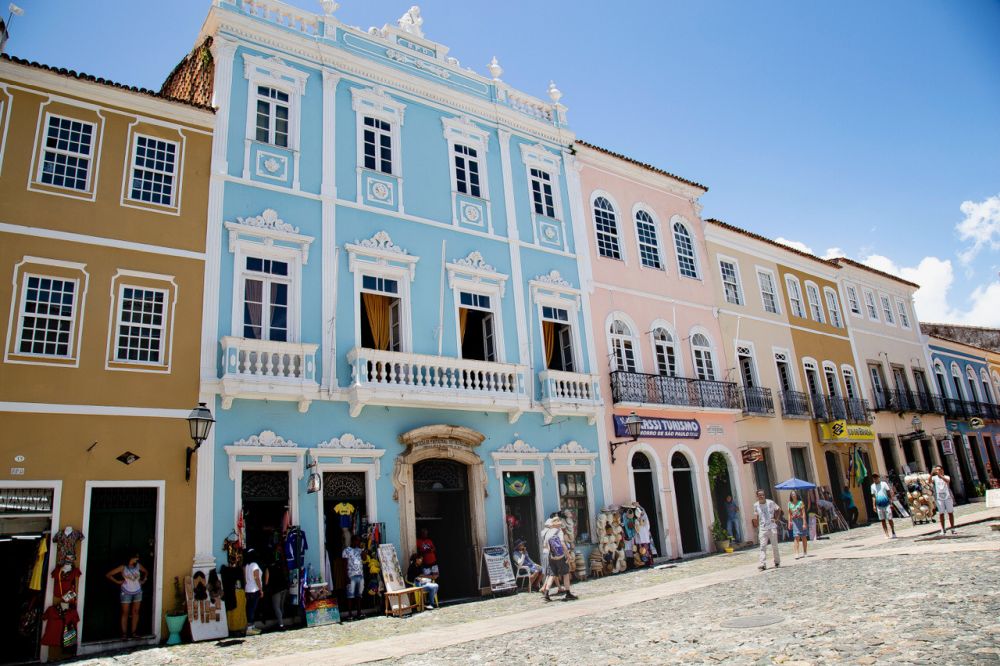
What can you expect on a visit to Salvador’s historic center?
The best way to experience Salvador’s historic center is just to take your time to explore.
I spent a few days here, and as I wandered through Pelourinho, Salvador’s historic center, it truly felt like a step back in time.
Exploring the cobblestone alleyways and side streets, marveling at the historic architecture, and admiring the lasting symbols of Afro-Brazilian culture, are all the things to do here.
Throughout your time in Pelourinho, you’re sure to see women dressed in traditional Baiano clothing selling acarajé, a popular street food made with fried black-eyed peas fritters and stuffed with shrimp; street musicians playing the drums; and capoeira performances, a martial art/dance form created as a means of resistance during the times of slavery.

It’s also full of sightseeing, from the Afro Brazil Museum to the Carnival House, which is dedicated to Brazil’s most famous event. Although the annual parades happen throughout the country, Salvador is home to one of the largest and most notable celebrations.
Wander through Largo do Cruzeiro de São Francisco, the historic town square, and check out the gilded São Francisco Church and Convent, known as the “golden church.” The churches Nossa Senhora do Rosário dos Pretos and the Catedral Basilica de Salvador are also architectural gems in the area.
Throughout the neighborhood, you’ll also see a number of art galleries selling local work, as well as restaurants and bars serving traditional food and caipirinhas, a Brazilian cocktail.
If your visit coincides with a Tuesday night, definitely check out the street parades too. At this time, Pelourinho becomes filled with musicians, samba music, and dancing.
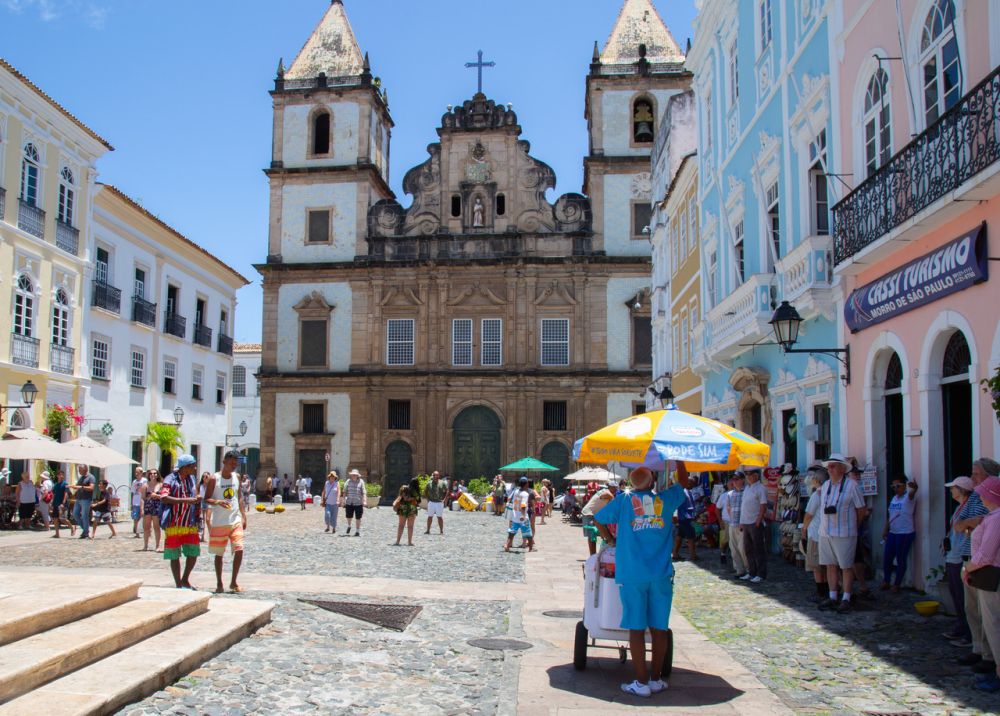
Is Pelourinho worth visiting?
Salvador’s historic center is absolutely worth a visit. Pelourinho is full of beauty, thanks to its gorgeous architecture and the nearby bay. But most importantly, it’s bursting with culture. Salvador is known as the Blackest city outside of Africa, and from its music to its food to its religion, this city and its historic center are more than worth going out of your way for, if you are interested in experiencing Afro-Brazilian culture and history.
If you only plan to visit the UNESCO World Heritage site on your trip, you’ll only need a day or so. But it’s best to add some extra time to explore more of the city beyond its historic core. Salvador is best enjoyed at a slower pace, so you can really enjoy everything you see. At minimum, spend three days here, but of course, if you have longer, there is truly so much to see and so much culture to experience while here.
Book accommodations in or near the Pelourinho here, or use the map below:
What sorts of travelers would like the Historic Center of Salvador de Bahia?
Pelourinho has something to offer so many types of travelers. Those interested in history will of course find plenty to love here, as the area is steeped in it. Architecture fans and photography lovers will enjoy wandering around and admiring the beautiful scenery.
Foodies will also be in paradise, as Salvador is home to distinct and delicious Bahian dishes, which incorporate African cooking techniques and ingredients. My personal favorite is moqueca, a flavorful seafood stew. Those looking for nightlife won’t be disappointed either, as the area is filled with bars and music.
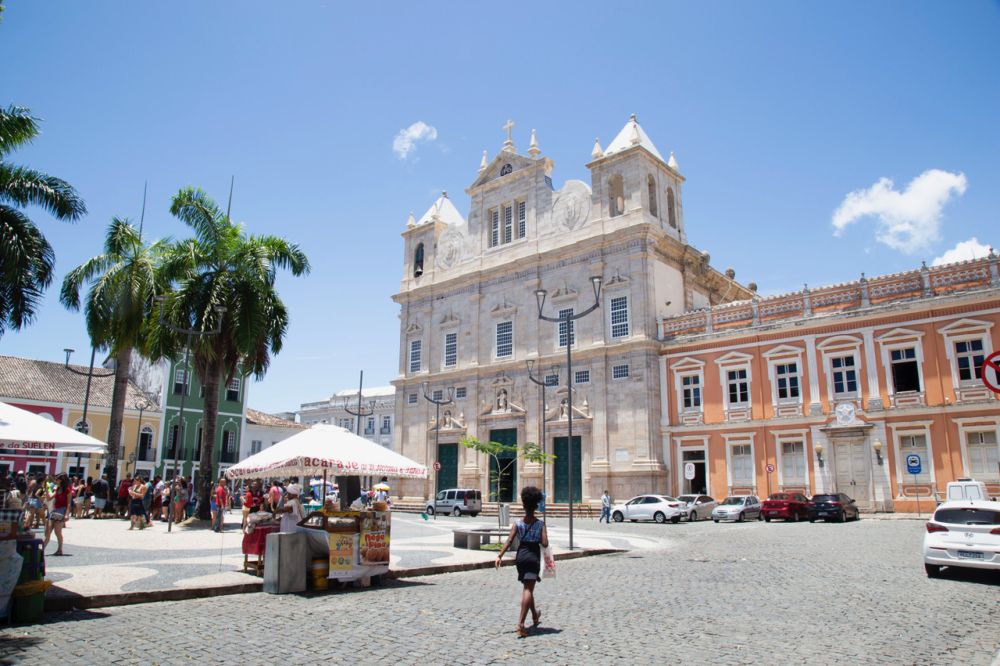
And although you can’t enjoy the beach right in the historic center, the beach isn’t far at all. Salvador is actually home to a number of scenic beaches, from Itapuã Beach to Farol da Barra Beach.
Tips for visiting Salvador
Salvador is an absolutely amazing city, but there are a few things to take note of before visiting.
Like many major cities in Brazil, you’ll want to keep safety in mind. As a solo female traveler, I never felt unsafe while here, but I did keep my guard up. I took precautions like not carrying all my money with me, or flashing electronics like my phone or camera.
Pelourinho is a typically busy area with many people trying to earn money from tourists in various ways. So just know that if anyone tries to gift you a bracelet, perform for you, or does anything else seemingly for free, they’ll expect you to offer some sort of payment in return.
You’ll also want to wear comfortable shoes, as the cobblestones can be difficult on your feet. Pelourinho is very walkable, but Uber is available if needed or if exploring beyond the historic center.
Try this highly-rated walking tour of the Historical Centre of Salvador.
Salvador is also a large city with so much more to see beyond its historic center, so be sure to explore other sites like its famous lighthouse, Farol da Barra; and some of its gorgeous beaches.
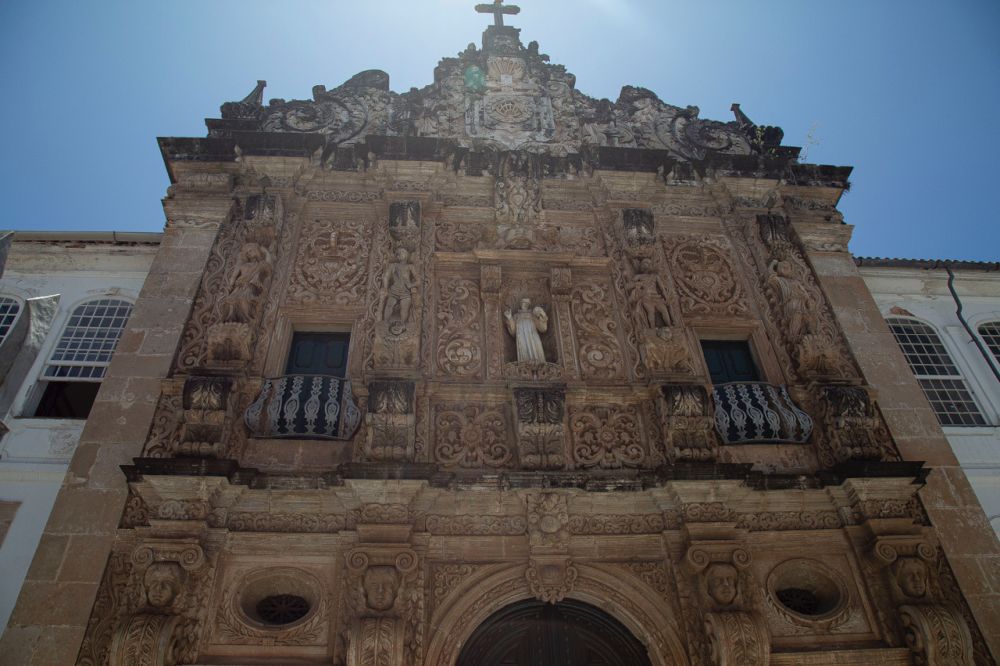
Where is the Historic Center of Salvador de Bahia?
Pelourinho is located near Centro, Salvador’s downtown, close to the Bay of All Saints.
Salvador is divided in two levels, an upper city (where Pelourinho is) and a lower city. To get to the upper city, you can take a historic elevator, Elevador Lacerda, for only a few cents. It has an amazing view and is a tourist destination on its own. Alternatively, you can take a short Uber ride.
From Salvador Airport, it will take 20-40 minutes by car to reach Pelourinho, depending on traffic.
You can easily take an Uber or a taxi. If you are driving, and you would like to park right within Pelourinho, you can download the Zona Azul app to find available spaces for three, six, or 12 hours at a time at a very low price. There are a couple other parking lot options throughout the neighborhood as well.
If you’re planning a road trip, compare rental car prices here.
From the airport, you can also take the Integra Salvador Norte 1001 bus, which will take about one hour and 20 minutes. The trip will cost approximately $2 USD and will drop you off in Praça da Sé, a square in Pelourinho.
For more information about the Historic Centre of Salvador de Bahia, see its official website.
Have you been to the Historic Center of Salvador de Bahia? If so, do you have any additional information or advice about this UNESCO World Heritage site? Please add your comments below!

